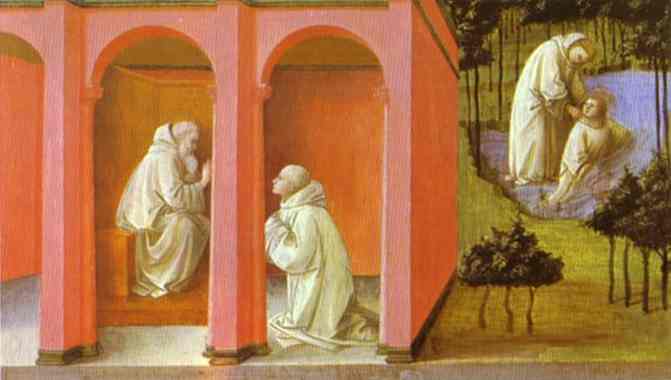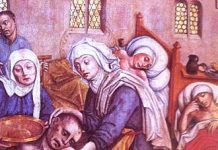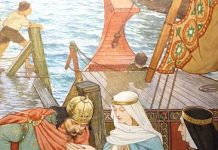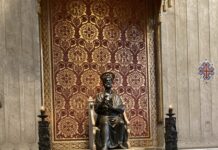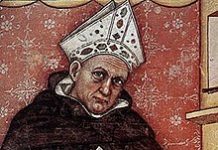Saint Ita was an early Irish nun, Íte ingen Chinn Fhalad in Gaelic (+ ca. 480 – 577). Descended from royalty (the King of Fara was an ancestor), she was baptized not long after the missionary work of Saint Patrick had evangelized good old Erin’s Isle and was known for her steadfast virtue. I did not know of the ‘six virtues of Irish womanhood’ that she displayed so well, but here they be for those looking for a good wife: “wisdom, purity, beauty, musical ability, gentle speech and needle skills”. When she founded her convent in Cluain Credhail – led there by three heavenly lights, and now called Killeedy or the ‘church of Saint Ita’ – she was offered many acres of land, but accepted only four, which she considered enough, and made it bear plenty.
Saint Ita also started a school, and one of her first pupils was a little lad named Brendan, who grew up to become the great ‘Navigator’ saint. Numerous other saints were given their start in the classroom of Saint Ita.
Ita died sometime in 570, or perhaps 577, and numerous miracles attributed to her intercession ever since. May she pray for poor Ireland, that she recover her Faith of yesteryear, without which all is lost, but with which all is gained.
We also commemorate on this day Saint Maurus, (512 – 584) the first disciple – or ‘oblate’ – of Saint Benedict at the great abbe of Monte Cassino, mentioned in Saint Gregory’s life of the monastic founder. Born in Africa of a Roman official, Equitius, Maurus was brought to Italy as a young lad, and joined Benedict at the Biblical age of twelve in his quest to devote his life completely to God – ora et labora – in prayer and work, and never left that service, his offering complete. One miracle recounted is when a fellow young oblate, Placidus, fell into the river while drawing water, fell in and was swept away. Benedict asked Maurus to go rescue him, which Maurus did, apparently walking on the water and pulling the lad to safety. Maurus attributed the miracle to Benedict’s prayers, but Benedict to Maurus’ obedience. Both are likely true. Devotion to Maurus spread throughout Europe, including the ‘blessing of Saint Maur’ with a medal of Saint Benedict. We should bring such things back. I did not know the name ‘Seymour’ means ‘son of Maur’, but we should all be spiritual children of Maur, Benedict and the rest of the saints.

